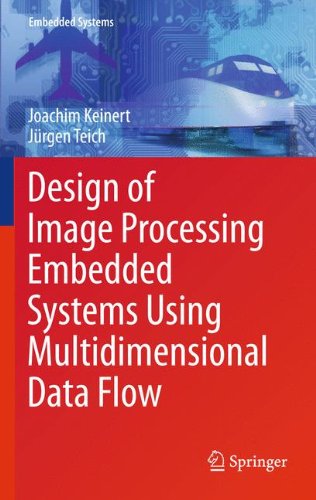

Most ebook files are in PDF format, so you can easily read them using various software such as Foxit Reader or directly on the Google Chrome browser.
Some ebook files are released by publishers in other formats such as .awz, .mobi, .epub, .fb2, etc. You may need to install specific software to read these formats on mobile/PC, such as Calibre.
Please read the tutorial at this link: https://ebookbell.com/faq
We offer FREE conversion to the popular formats you request; however, this may take some time. Therefore, right after payment, please email us, and we will try to provide the service as quickly as possible.
For some exceptional file formats or broken links (if any), please refrain from opening any disputes. Instead, email us first, and we will try to assist within a maximum of 6 hours.
EbookBell Team

5.0
18 reviewsDesign of Image Processing Embedded Systems Using Multidimensional Data Flow Joachim Keinert Jürgen Teich This book presents a new set of embedded system design techniques based on multidimensional data flow, which combine the various benefits offered by existing methodologies such as block-based system design, high-level simulation, system analysis and polyhedral optimization. It describes a novel architecture for efficient and flexible high-speed communication in hardware that can be used both in manual and automatic system design and that offers various design alternatives, balancing achievable throughput with required hardware size. This book demonstrates multidimensional data flow by showing its potential for modeling, analysis, and synthesis of complex image processing applications. These applications are presented in terms of their fundamental properties and resulting design constraints. Coverage includes a discussion of how far the latter can be met better by multidimensional data flow than alternative approaches. Based on these results, the book explains the principles of fine-grained system level analysis and high-speed communication synthesis. Additionally, an extensive review of related techniques is given in order to show their relation to multidimensional data flow. •First book on multidimensional data flow, including various different models of computation and resulting analysis and synthesis challenges and benefits; •Presents modeling, system analysis and hardware synthesis, using multidimensional data flow, along with a detailed discussion of related approaches to demonstrate what fits designers’ needs best; •Describes how multidimensional data flow can coexist with classical, one-dimensional models of computation; •Applies multidimensional data flow to various image processing examples, such as JPEG2000 encoding, Motion JPEG decoding, binary morphological reconstruction and multi-resolution filtering.